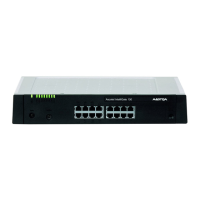System Functions and Features as of I7.9
Data services 239
syd-0200/3.0 – I7.9 – 11.2009
6. 5 X.25 in the D channel
The public ISDN network provides transitions from the D channel of an ISDN access
to X.25 data networks (X.31 Case B)
1)
. It provides the capability of transmitting
packet-orientated data over the D channel at a max. rate of 9,600 bit/s (with low
priority) in addition to protocol messages (example: automatic teller machines,
credit card terminals).
The advantage of data transmission over the D channel is that voice / data calls can
be made simultaneously over the allocated B channels.
Fig. 109 X.25 transmission via the D channel
Tips on using X.25
• The digital switching of the public exchange must be capable of forwarding
packet-switched data in the D channel to the X.25 network.
• Avoid excessive loads such as those that can occur through continuous data
transmission or extensive backups.
• Errors can be prevented by reducing the data rate or by distributing the load
over several X.25 channels.
• The S bus must be set to ETSI bus in the System Configuration.
• X.25 data can be transmitted simultaneously over the D channel and two B
channels each of the S/T ports.
1)
Only available in certain countries.
8
3¬
0-0
6
8$
4ERMINAL¬!DAPTER
)3$.
4¬
00
HAZAAENC
8
TERMINAL
0"8

